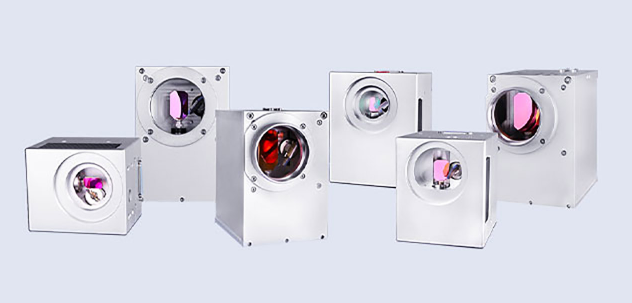The high-power laser scanning galvanometer system is usually equipped with a focusing lens with a large focal length, which is usually not less than 350mm and has a large scanning range. The scanning laser galvo mirror processing system is usually equipped with an F-THETA focusing lens with a focal length of 460mm, and the welding range reaches 220*180mm. Without moving the scanning galvanometer system, multiple battery top covers can be placed in the same fixture for charging. The core soft connection piece is welded, and the welding position can be visually programmed through the software. The galvanometer installed on the manipulator can flexibly weld battery modules of various sizes, and the welding range can reach 1-2m.
Since the scanning galvanometer is deflected at high speed by the lens, the reflected laser spot is irradiated to different positions, and the speed of the spot can reach 3000mm/s, that is, jumping from one welding position to another position, the speed can reach 10% of the general servo motor platform. It can greatly improve the welding efficiency. For example, when welding a battery module with 16 47178 cells and 32 electrode connecting pieces, it takes at least 14 seconds for the servo platform to move the laser spot position, while the robot is installed on the robot arm. The scanning galvanometer system on the top is welded, and the device only needs 7 seconds to move the light spot position, and the larger module can better reflect the difference in efficiency.

For the lead screw guide type servo motor platform system, the welding head is driven to move a complex trajectory at high speed. When the trajectory turns, especially when the turning radius is small, the moving speed of the welding head will be reduced, which will cause the speed of the welding process to be unstable and affect the welding process. Effect. These problems do not exist when welding arcs or other complex trajectories with a single galvo mirror. For example, when welding some soft connecting pieces of battery cells in a high-power laser galvo mirror system, the laser can weld circular trajectories at a speed of 200-300mm/s, some modules will also use the S-shaped track for welding.
As a high-energy beam welding, a large aspect ratio of the weld seam is a major feature of laser welding, but sometimes it is not desirable to have a large weld seam aspect ratio. It has a larger width, reduces the depth of the weld, adopts the spiral track welding, and through the high-speed rotation of the spot along the welding direction, the aspect ratio of different welds can be obtained without changing the external optical path conditions.
Due to the large focal length of the galvanometer, it has a large focal depth, that is, welding within a certain height range, the workpiece can obtain stable penetration, avoiding the unstable penetration caused by the height deviation of the workpiece, two layers of 1.5mm Through penetration welding of aluminum plate, the welding depth and width data of the workpiece can be obtained under different focal positions of the scanning laser galvo mirror. In the range of +2 to -3mm, the weld penetration depth and width change little. In addition, when the working distance of the lens is above 500mm, the lens lens is not easily affected by welding spatter, which also brings better welding stability.
Compared with traditional laser welding, the biggest advantage of scanning galvanometer laser welding is that it is not limited by the speed of the motor. Under the fast swing of the X and Y mirrors of the galvanometer, it can easily and flexibly achieve high speed of any curve in the plane in a wide range. Welding can better reflect the efficiency advantages and process advantages of laser high-speed welding. Especially the high-power laser scanning galvanometer welding system has become more and more the choice of equipment for customers in mass production. It has gradually developed from module welding to welding applications of other battery products. It is believed that in the future large-scale manufacturing of power batteries There will be wider and more general applications.